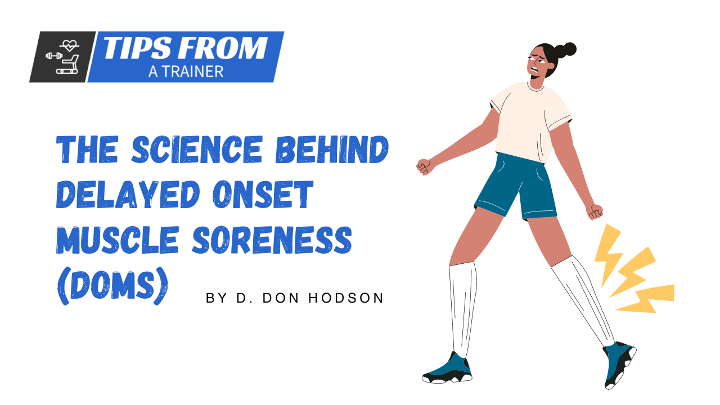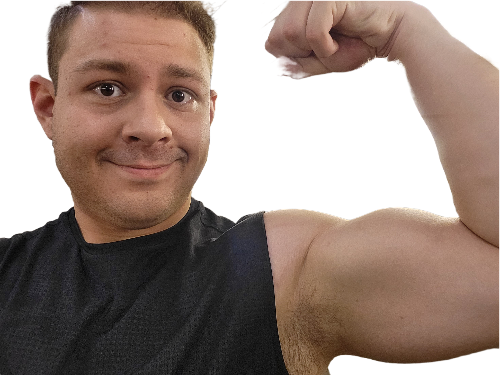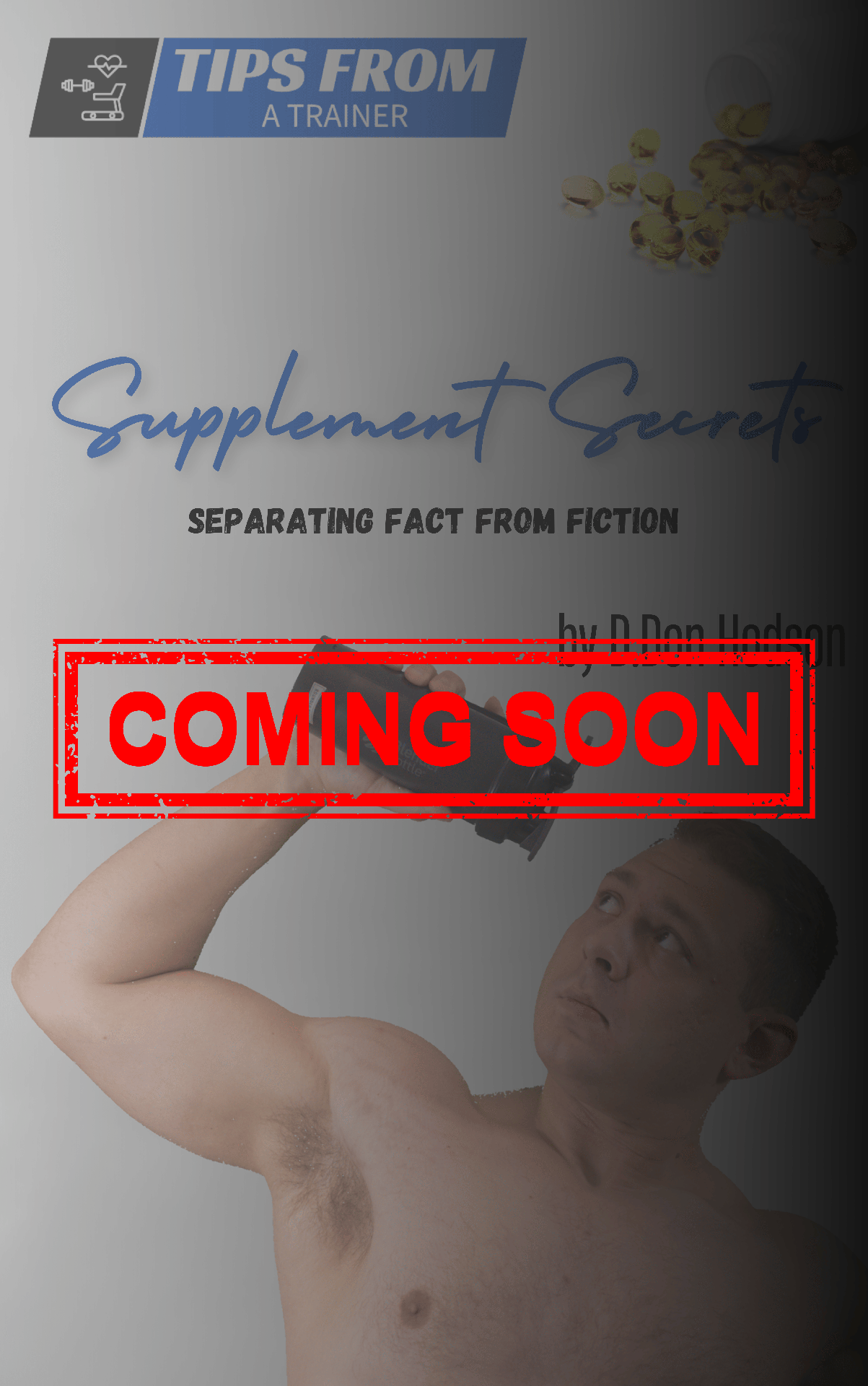Introduction
Understanding DOMS
Delayed Onset Muscle Soreness, commonly known as DOMS, is a phenomenon experienced by individuals following intense or unaccustomed physical activity. It manifests as muscle discomfort, stiffness, and soreness that emerges hours after exercise, often peaking around 24 to 48 hours and gradually subsiding over the following days. DOMS has intrigued fitness enthusiasts, athletes, and researchers alike due to its intriguing nature and its implications for exercise effectiveness and muscle adaptation.
The Intriguing Nature of Muscle Soreness
The enigma of DOMS lies in the fact that it doesn't manifest immediately after exercise, as one might expect. Instead, it manifests after a delay, hence the name "Delayed Onset." This delayed appearance of soreness can lead to confusion and curiosity among individuals who may wonder why they feel sore long after a workout. Additionally, the intensity of DOMS can vary widely, with some experiencing mild discomfort while others may find it more pronounced and even limiting. Understanding the underlying mechanisms of DOMS can provide valuable insights into how our muscles respond to physical stress and adapt over time.
Purpose of the Article
The primary objective of this article is to unravel the scientific intricacies of DOMS, shedding light on its physiological basis, time course, influencing factors, and its potential connection to muscle growth and adaptation. By delving into the underlying mechanisms, we aim to provide readers with a comprehensive understanding of DOMS, empowering them to make informed decisions about their exercise routines, recovery strategies, and overall fitness goals.
Table of Contents
Introduction
Understanding DOMS
The Intriguing Nature of Muscle Soreness
Purpose of the Article
The Physiology of Muscle Soreness
Microscopic Muscle Damage
Inflammatory Response and Swelling
Neural Factors in DOMS
The Time Course of DOMS
Onset and Peak Soreness
Duration and Subsiding of Symptoms
Variability in DOMS Recovery
Factors Influencing DOMS
4Exercise Intensity and Duration
Eccentric Contractions and Muscle Lengthening
Individual Variability and Genetics
Managing and Alleviating DOMS
Active Recovery and Gentle Movement
Proper Hydration and Nutrition
Stretching and Foam Rolling
The Connection Between DOMS and Muscle Growth
Muscle Adaptation and Hypertrophy
DOMS as a Marker of Workout Intensity
Balancing Muscle Recovery and Progressive Training
Debunking Myths About DOMS
Lactic Acid Buildup and DOMS
No Pain, No Gain: Rethinking Workout Intensity
DOMS vs. Acute Muscle Injury
Conclusion
Decoding the Mystery of DOMS
Embracing DOMS as a Sign of Progress

The Physiology of Muscle Soreness
Microscopic Muscle Damage
DOMS is closely linked to microscopic damage that occurs within muscle fibers during strenuous exercise. When muscles are subjected to intense or unfamiliar activities, such as weight lifting or eccentric contractions, the mechanical stress applied to muscle fibers can result in tiny tears at the cellular level. These micro-tears activate a complex process of repair and regeneration, triggering the body's adaptive response to build stronger muscles.
Inflammatory Response and Swelling
Inflammation plays a crucial role in the development of DOMS. The micro-tears in muscle fibers trigger an inflammatory response as the body sends immune cells and signaling molecules, including cytokines, to the affected area. This immune response serves as a crucial mechanism to clean up cellular debris and initiate the healing process. The influx of immune cells and the release of various biochemical compounds contribute to the swelling, tenderness, and discomfort characteristic of DOMS.
Neural Factors in DOMS
While the physical processes mentioned above contribute to the physiological aspects of DOMS, there is also a significant neural component. Heightened neural sensitivity and the activation of pain receptors contribute to the perception of soreness. The brain's interpretation of signals from damaged muscle fibers and surrounding tissues contributes to the discomfort experienced during DOMS. This neural response is a protective mechanism that encourages individuals to avoid further stressing the affected muscles while they recover.
The Time Course of DOMS
Onset and Peak Soreness
Delayed Onset Muscle Soreness (DOMS) is characterized by its unique time course, setting in approximately 12 to 24 hours after intense physical activity. This delayed appearance distinguishes it from immediate soreness, which is often a result of acute muscle injury. As DOMS progresses, individuals typically experience the peak of soreness around 24 to 48 hours post-exercise. During this period, activities that engage the affected muscles may result in discomfort and tenderness, making movements challenging and causing individuals to become acutely aware of the muscles they worked.
Duration and Subsiding of Symptoms
Following the peak of soreness, DOMS begins to gradually subside. Over the course of several days, the intensity of muscle soreness decreases, and individuals find relief as their muscles recover. The duration of DOMS symptoms can vary depending on factors such as exercise intensity, muscle groups involved, and an individual's overall fitness level. Typically, mild to moderate DOMS may last anywhere from three to five days, with more severe cases possibly lingering for up to a week.
Variability in DOMS Recovery
Individual recovery from DOMS exhibits considerable variability. Factors such as genetics, age, fitness level, and prior training experience can influence how quickly an individual's body repairs and adapts to muscle damage. Athletes and individuals who engage in regular physical activity may experience a shorter duration of DOMS as their muscles adapt more efficiently. On the other hand, newcomers to exercise or those who push their limits with novel movements might experience more prolonged soreness.
Factors Influencing DOMS
Exercise Intensity and Duration
Exercise intensity and duration are key determinants of the severity of DOMS. Engaging in high-intensity workouts, particularly those that challenge muscles with heavier loads or longer durations, is more likely to result in significant muscle soreness. Eccentric exercises, which involve the lengthening of muscles under tension, are particularly notorious for inducing intense DOMS. The degree of mechanical stress imposed on muscle fibers during eccentric contractions contributes to micro-tears and the subsequent inflammatory response.
Eccentric Contractions and Muscle Lengthening
Eccentric contractions play a pivotal role in triggering DOMS. When a muscle lengthens while under tension, as is the case in activities like downhill running or the lowering phase of a bicep curl, the mechanical strain on muscle fibers is greater. This increased strain contributes to a higher likelihood of micro-tears, sparking a cascade of events that result in DOMS. The eccentric component of an exercise routine often leads to more pronounced soreness, but it also plays a crucial role in promoting muscle growth and strength.
Individual Variability and Genetics
Individuals vary in their susceptibility to DOMS due to genetic and biological factors. Genetic predispositions influence an individual's inflammatory response, recovery rate, and overall adaptability to exercise-induced muscle damage. Some people may have a more robust ability to recover quickly from DOMS, while others may experience prolonged soreness even after modest exercise. Age also plays a role, as younger individuals tend to recover more rapidly from DOMS compared to older individuals. Training history, hydration status, and even sleep quality are additional factors that can impact the severity and duration of DOMS.
Managing and Alleviating DOMS
Active Recovery and Gentle Movement
Active recovery involves engaging in low-intensity exercises or activities following intense workouts to help alleviate DOMS. This approach promotes blood circulation to the muscles, which aids in flushing out metabolic waste products and delivering oxygen and nutrients necessary for repair. Activities like brisk walking, swimming, or cycling at a leisurely pace stimulate blood flow without placing excessive strain on recovering muscles. Active recovery also maintains joint mobility and flexibility, preventing stiffness and reducing the perception of soreness. By promoting the removal of waste products and supporting tissue repair, active recovery contributes to a faster recovery from DOMS.
Proper Hydration and Nutrition
Adequate hydration and proper nutrition are vital components of managing DOMS and optimizing recovery. Hydration ensures that the body's metabolic processes, including muscle repair, occur efficiently. Water helps transport nutrients and oxygen to muscles, aids in the removal of waste products, and supports overall cellular function. Alongside hydration, consuming a balanced diet rich in macronutrients and micronutrients is essential. Protein intake is particularly crucial as it provides the building blocks (amino acids) necessary for muscle repair and growth. Carbohydrates replenish glycogen stores, providing energy for recovery, while vitamins and minerals play vital roles in various physiological processes. Proper nutrition supports the body's ability to repair and adapt to the stress of exercise, ultimately mitigating the severity and duration of DOMS.
Stretching and Foam Rolling
Incorporating stretching and foam rolling into a post-workout routine can help alleviate DOMS by enhancing muscle flexibility and reducing muscle tension. Dynamic stretches, which involve controlled movements that take joints and muscles through their full range of motion, can help improve blood circulation and decrease muscle stiffness. Static stretching, where muscles are elongated and held in a stretched position, can contribute to improved muscle flexibility and comfort. Foam rolling, a form of self-massage using a foam roller, targets trigger points and adhesions within muscle tissue. This practice can break up muscle knots, improve blood flow, and promote relaxation. While stretching and foam rolling may not directly prevent DOMS, they can contribute to better overall muscle function and reduce the discomfort associated with muscle soreness.
The Connection Between DOMS and Muscle Growth
Muscle Adaptation and Hypertrophy
Delayed Onset Muscle Soreness (DOMS) is intimately linked to the process of muscle adaptation and hypertrophy. The microscopic damage inflicted upon muscle fibers during intense exercise triggers a cascade of events aimed at repairing and strengthening the tissue. In response to this damage, the body initiates a repair process where satellite cells, specialized muscle cells, fuse to existing muscle fibers to aid in repair and growth. Over time, this repair process leads to an increase in muscle fiber size, or hypertrophy. The discomfort and soreness associated with DOMS signify that the muscles have been subjected to stress beyond their previous capacity, stimulating the adaptive response necessary for growth and strength development.
DOMS as a Marker of Workout Intensity
DOMS can serve as a valuable indicator of workout intensity. As individuals engage in physical activities that challenge their muscles in new ways or exceed their accustomed levels of effort, DOMS is more likely to occur. The presence of DOMS suggests that the muscles have been effectively worked and that the exercise stimulus was sufficient to trigger muscle damage and subsequent growth. Fitness enthusiasts and athletes can utilize DOMS as a gauge to monitor the effectiveness of their training programs. While not the sole determinant of an effective workout, DOMS indicates that the muscle fibers have undergone the stress necessary to promote adaptation, making it a relevant marker of training intensity.
Balancing Muscle Recovery and Progressive Training
An understanding of DOMS is crucial for striking the right balance between muscle recovery and progressive training. While inducing DOMS occasionally can be beneficial for muscle growth, consistent and excessive soreness can impede recovery and hinder overall progress. Adequate recovery time is necessary for the body to repair damaged muscle fibers, synthesize new proteins, and adapt to the imposed stress. Failing to allow sufficient recovery can lead to overtraining, compromised immune function, and increased risk of injury. To achieve optimal results, individuals should incorporate periods of rest, active recovery, and targeted nutrition into their training regimen. A progressive approach that gradually increases exercise intensity and volume over time ensures that muscles are consistently challenged without causing excessive and prolonged DOMS.
Debunking Myths About DOMS
Lactic Acid Buildup and DOMS
One common misconception is the belief that lactic acid buildup is the primary cause of DOMS. Lactic acid, a byproduct of anaerobic metabolism during intense exercise, does accumulate in muscles but is quickly cleared from the bloodstream. DOMS, however, is primarily attributed to microscopic damage in muscle fibers and the subsequent inflammatory response. Lactic acid does contribute to the sensation of muscle fatigue during exercise but is not the main culprit behind the delayed soreness that follows a workout. This myth persists due to the association of lactic acid with muscle fatigue, but it's important to understand that DOMS is a separate phenomenon with distinct underlying mechanisms.
No Pain, No Gain: Rethinking Workout Intensity
The saying "no pain, no gain" has long been associated with effective workouts and muscle development. However, it's crucial to differentiate between productive discomfort and harmful pain. While DOMS may indicate that muscles have been effectively stimulated, extreme pain is not a prerequisite for muscle growth. Pushing muscles to the point of severe pain can lead to overtraining, injury, and hindered progress. Effective workouts can indeed induce some level of discomfort, but it should be within a manageable range. A well-designed training program should balance intensity with adequate recovery, allowing muscles to adapt and grow without causing excessive and prolonged discomfort.
DOMS vs. Acute Muscle Injury
Distinguishing between DOMS and acute muscle injury is essential for proper training and recovery. DOMS is a natural response to muscle stress and microscopic damage, typically peaking 24 to 48 hours after exercise and subsiding within a few days. Acute muscle injury, on the other hand, involves more severe damage to muscle fibers, often resulting from sudden trauma, overexertion, or improper form. Acute injuries may lead to sharp pain, swelling, bruising, and restricted movement. Unlike DOMS, acute injuries may require medical attention and extended recovery periods. It's crucial to pay attention to the nature and duration of discomfort to differentiate between DOMS and potential muscle injury.
Conclusion
Decoding the Mystery of DOMS
In unraveling the enigma of Delayed Onset Muscle Soreness (DOMS), this article has explored the intricate processes underlying this phenomenon. From microscopic muscle damage triggered by intense exercise to the subsequent inflammatory response and neural adaptations, the multifaceted nature of DOMS has come to light. The journey from onset to recovery has been dissected, highlighting the variability in how individuals experience and recover from DOMS. Factors influencing DOMS, such as exercise intensity, eccentric contractions, and individual genetics, have been meticulously examined.
Embracing DOMS as a Sign of Progress
As the scientific mechanisms behind DOMS have been unveiled, it becomes evident that DOMS serves as a tangible testament to the body's resilience and adaptability. While managing and alleviating DOMS through strategies like active recovery, hydration, nutrition, stretching, and foam rolling is crucial, it's equally important to recognize the connection between DOMS and muscle growth. DOMS acts as a marker of workout intensity, indicating that muscles have been effectively challenged. Striking a balance between muscle recovery and progressive training is key to optimizing results.
In dispelling myths surrounding DOMS, the distinction between lactic acid buildup and DOMS, as well as the reevaluation of the "no pain, no gain" mentality, has been elucidated. Moreover, the differentiation between DOMS and acute muscle injury has been clarified, empowering individuals to make informed decisions about their training and recovery practices.
In essence, the exploration of DOMS goes beyond the realm of physical discomfort; it delves into the realm of physiological adaptation and muscular growth. As individuals embrace DOMS as a natural part of the journey toward greater strength and resilience, they can navigate their fitness pursuits with a deeper understanding of their bodies and the processes at play.

Don Hodson, Certified Personal Trainer
I'm Don, an ACE-certified personal trainer and the founder of Tips From A Trainer. With my passion for fitness and years of experience, I've helped countless individuals transform their physiques!
Having personally overcome weight challenges throughout my life, I understand the struggle. Through consistency, exercise, and a balanced diet, I have managed to stay in shape and I want to share my message with the world!
The fitness industry is fraught with misconceptions and deceptive practices, which is why I am committed to providing you with the truth.
- My Site: www.Don-Hodson.com
- My Company: www.ConnectedAgeMarketing.com

The Science Behind Delayed Onset Muscle Soreness (DOMS)